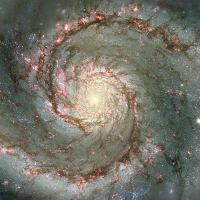
Game # 17: Black Holes
Soapbox:Today I am going to talk about black holes.
There is a lot of mystery and speculation about these stellar giants. This is caused by the fact that we can not observe black holes in the regular sense. The reason for this is that the gravitational force is so great that even the infinitesimal amount of matter that makes up a photon is affected and can not escape. This means that light goes in but does not come out.
There is still some debate about how black holes are created, however a common accepted theory is as follows: Stars usually slowly collapse fusing the atoms from hydrogen into heavier and heavier materials until they reach a stable state and then go out. Sometimes they slowly gain mass by attracting nearby bodies such as comets, asteroids, old dead stars and nearby gas and dust. This is known as accretion.
When a star accretes a specific amount of mass known as the Chandrasekhar limit the star will either explode as a type 1A supernova or collapse into a black hole (This latter is usually because it has taken on significantly more mass than the Chandrasekhar limit, typically through collision with another star). It is interesting to note that this means that every 1A supernova has the exact identical force making these phenomena great yardsticks of cosmic distance.
One big misconception is that black holes are completely undetectable. This can be the case, but generally they are surrounded by a very bright object called The Accretion Disk. As the name implies it is the area around black holes where matter is being inducted inside what is know as the Event Horizon. This is the area that once passed, not even light will escape. The matter in the Disk is moving at close to light speed and is extremely energized. As such it is usually the brightest thing in space. You can see the accretion disk of large black holes in the center of most galaxies, including our own. The central black hole in the Milky Way is called Sagittarius A*.
This is a galaxy similar in look to our own Milky Way, it is called Spiral Galaxy M51. The bright spot in the center is the accretion disk of a super massive black hole. Only a black hole could be massive enough to gravitationally hold the billions of stars of these large galaxies.

Over Billions of years the arms of the galaxy are slowly eaten, like this distant cousin we call The Sombrero Galaxy M104.

Eventually it will completely consume everything leaving only the accretion disk like this Lenticular Galaxy NGC2787:

Finally the disk itself will be consumed and then the black hole will truly be dark. An epically massive Super Black Hole drifting through space swallowing all that crosses it's path. Kinda mind boggling.
There are smaller black holes than just the super massive ones in the center of galaxies. Some have consumed their disks and are only detectable through gravitational distortion, others appear as extremely bright stars. They are generally pulled by the Super Massive ones and often make up part of the local neighborhood around the center of a galaxy. I hope you enjoyed this, comments are welcome.
Chess: In this game my opponent exposes his king while trying to expose mine. With a timely sacrifice I am able to quickly end the contest.
